Spain
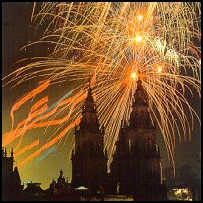 Fireworks in front of the Cathedral of Santiago mark the eve of July 25th, when the king offers Spain to St. James. In 2004 the Archbishop used the occasion to denounce the new socialist Prime Minister Zapatero and said that the Church had every right to interfere in national politics if it involved “the salvation of souls”. [1] He seemed to be defending the Church tactic of calling on Catholic MPs to vote down legislation it doesn't like, rather than confining itself to speaking out in the pulpit or newspapers. The leftist politician, Gaspar Llamazares called this “delegitimising parliament”. [2] Tensions rose further when the Spanish bishops effectively told the faithful how to vote in the 2008 elections Leading socialist politician José Blanco retorted that “if the Spanish ecclesiastical hierarchy want to get into politics, they should run for election”. [3]
Fireworks in front of the Cathedral of Santiago mark the eve of July 25th, when the king offers Spain to St. James. In 2004 the Archbishop used the occasion to denounce the new socialist Prime Minister Zapatero and said that the Church had every right to interfere in national politics if it involved “the salvation of souls”. [1] He seemed to be defending the Church tactic of calling on Catholic MPs to vote down legislation it doesn't like, rather than confining itself to speaking out in the pulpit or newspapers. The leftist politician, Gaspar Llamazares called this “delegitimising parliament”. [2] Tensions rose further when the Spanish bishops effectively told the faithful how to vote in the 2008 elections Leading socialist politician José Blanco retorted that “if the Spanish ecclesiastical hierarchy want to get into politics, they should run for election”. [3]
Following this failed attempt to influence the politicians "from above" the Catholic Church has mobilised conservative groups to apply pressure "from below", (as it has also done to try impose Vatican policies on the European Union). This has been much more successful and, due to pressure from anti-choice groups, in 2014 Spain turned abortion from a right into to a crime. [4] Meanwhile popular support for the Church has been waning, especially among the young. As of 2018, only half of young Spaniards under 25 said they believed in God, and this has been accompanied by a decline in church attendance and a rise in civil marriages. [5]
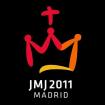 |
Spanish Catholics protest new way to hide costs of 2011 papal visit |
A tax dodge gives the impression that multinationals paid for the Pope’s trip to Spain in 2011. Yet despite record unemployment among Spanish young people, taxpayers subsidised the Catholic Church’s World Youth Day and the papal visit. Protests came from unemployed youth and Catholic groups of laymen and priests. The Pope’s wealthy corporate sponsors paid for only 20% of “their” donations. | |
 |
Concordat challenged before the Constitutional Court (2009) |
A Spanish judge questioned the legality of the Concordat before the Constitutional Tribunal. His ruling says the State cannot delegate education to the Church. | |
. | |
About Spanish concordats | |
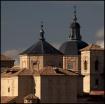 |
Spanish concordats of the 19th and 20th centuries |
Queen Isabella's concordat of 1851 was abrogated in 1931, but General Franco, restored Church privileges in his concordat of 1953 (for which the pope decorated him). However, he guarded his right to appoint bishops, and only his death allowed the pope to regain control of the clergy through a new concordat in 1976. By then the Vatican was obliged to agree to more separation of church and state. | |
 |
Generalissimo Franco and the Vatican |
As a wartime ruler Franco got a modus vivendi — and only when his survival seemed assured was he dignified with a concordat. He gave the Church a religious monopoly and control of education and the press. In return, he secured the royal concordat privilege of choosing clerics, which helped him consolidate his grip on the country. | |
 |
The Church shifts from dictator's partner to special interest group in a democracy |
With the death of Franco, the Church had to revise his concordat and accept the loss of its religious monopoly. However, the new constitution was arranged so as to still give the Church a special status. (And no wonder, since the concordat, though signed later, was negotiated at the same time.) It proved easier to remove Franco's statue than the Church privileges that he helped entrench. | |
. | |
Spanish concordat texts♦ Queen Isabella II's concordat (1851) | |
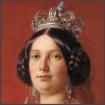 |
Queen Isabel II's concordat (1851) : text |
To guard against the spectre of democracy, the 1851 concordat gave the Church a religious monopoly and control of education and the press. Isabel II, a weak monarch, got only a face-saving vestige of royal patronage. Her concordat was abrogated by the Second Spanish Republic in 1931, but General Franco revived its first four articles in his 1941 Convention, including the requirement that Catholicism be "the sole religion" in Spain. | |
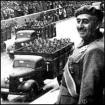 |
Franco's wartime convention (1941) |
Franco wanted a full concordat with royal rights of patronage. The Vatican, uncertain of his future, compromised with a less official "convention" which gave him only a limited role in choosing bishops. After Franco's regime (unlike the other Fascist ones) managed to survive WWII, this royal privilege was confirmed in Articles 7 and 8 of the 1953 Concordat. | |
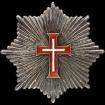 |
Franco's concordat (1953) : Text |
"The agreement was more favourable to the Vatican than to Franco....The Concordat served, nevertheless, to legitimise the regime in the eyes of many Spaniards, and it was instrumental in strengthening Franco's hold over the country." | |
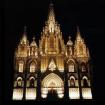 |
Modifications to Franco's concordat (1976) |
The year after the death of General Franco, when democracy returned to Spain, a swift modification of his 1953 Concordat kept Franco's concordat from being swept away along with his dictatorship. The revision of Article 7 largely rescinds Franco's royal patronage (patronato real), by which he helped select bishops. And Art. 16, which had placed clerics largely above criminal law, is quietly replaced. | |
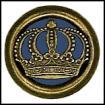 |
The four 1979 concordats |
When Franco died in 1975 Spain became a constitutional monarchy. The next year a couple of article in Franco's concordat were revised and then in 1979 there followed more "revisions". These are actually four full-scale concordats concerning legal, educational, military and financial matters. These concordats have proven to be controversial, provoking several court challenges and a European Commission investigation. |














